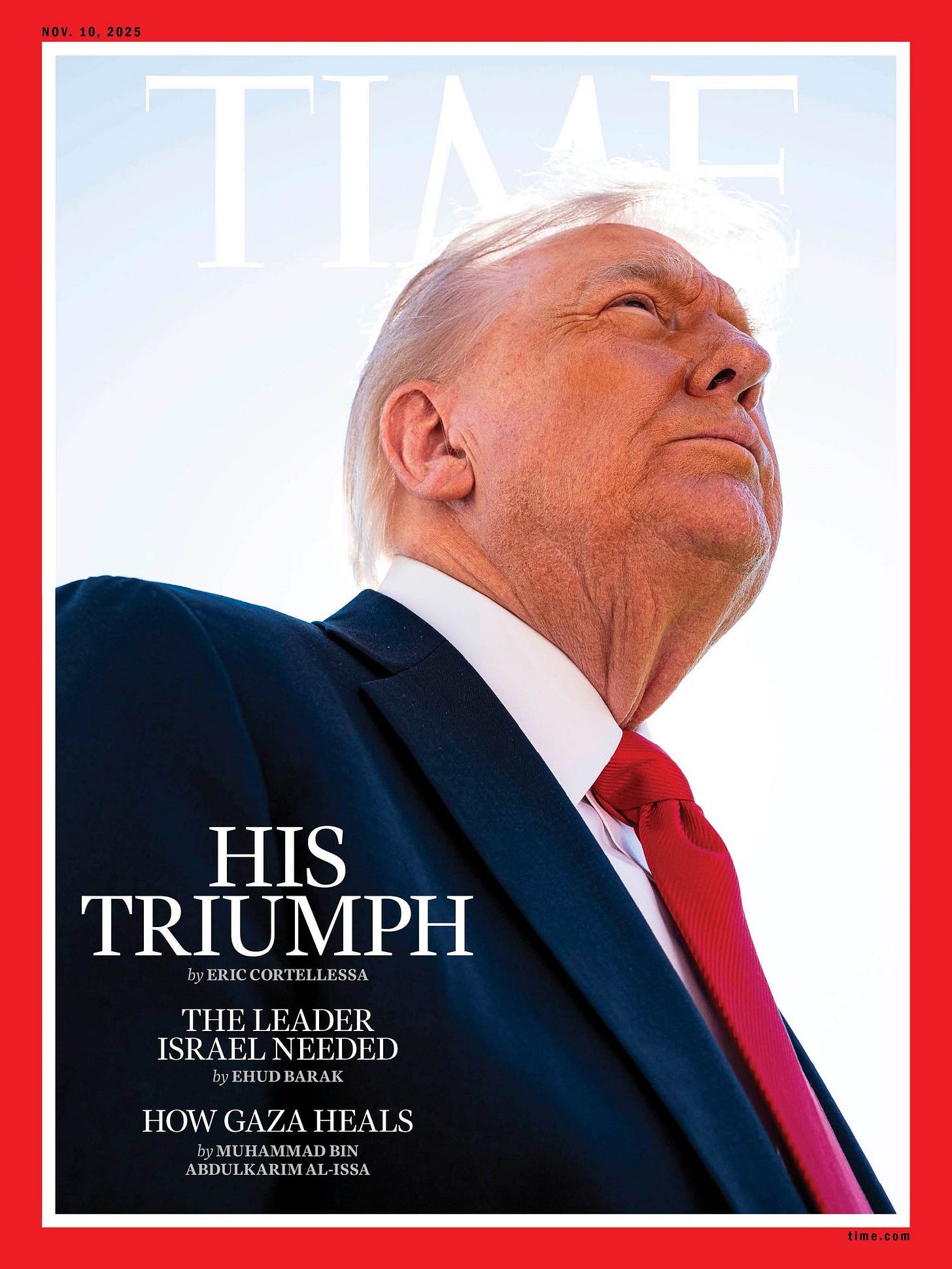Trump tucks extra chins into shirt
There are moments when political imagery transcends symbolism and becomes costume—when the collar, not the content, carries the weight of legacy. Donald Trump’s November 2025 TIME magazine cover offers such a moment. Framed from below, haloed by a clear blue sky, and captioned with the monolithic “HIS TRIUMPH,” the image was clearly designed to evoke grandeur. But grandeur, like tailoring, is a matter of fit. And in this case, the fit was tight—literally.
The photo reveals more than it intends. Trump’s shirt collar appears to compress not just his neck, but a surplus of chins—each one a metaphorical fold of ambition, ego, and unphotogenic truth. It’s as if the garment itself has become a vault for contradiction, a bespoke solution for legacy inflation. The shirt doesn’t just hold his body—it holds his narrative.
And then there’s the ear.
Visible in profile, it’s the same ear that was grazed by a bullet during the 2024 campaign rally in Butler, Pennsylvania. A wound once described as two centimeters wide , now shows no visible scar. Plastic surgeons have called the healing “impressive,” while others note the eerie absence of trauma. In the context of this cover, the ear becomes a symbol of curated resilience—a triumph not just of survival, but of cosmetic erasure.
To decode this sartorial spectacle, we turn to editorial stylist Gustavo Velour, a pioneer in “power concealment couture.” Gustavo’s clients have included prime ministers who needed to hide scandals in their lapels, tech CEOs whose hoodies were lined with NDAs, and now, a president whose collar must accommodate three chins, two reversals, and one unratified treaty.
“We don’t dress leaders for truth,” Gustavo explains. “We dress them for triumph. The collar is a canvas. The chin is negotiable.”
This philosophy—equal parts fashion and fiction—invites a broader civic question: What truths are we willing to tuck away for the sake of optics? In a political landscape increasingly shaped by angles, lighting, and editorial framing, the body itself becomes a battleground for narrative control.
The TIME cover, then, is not just a portrait. It is a prompt. A participatory challenge to readers, creators, and citizens alike:
Design your own “Executive Compression Garment.”
What truths would you tuck into the collar, cuffs, or lining?
Would your tie distract from a broken promise?
Would your lapel conceal a civic contradiction?
Because in the theater of democracy, the costume is never just costume. It is commentary. And sometimes, it’s the ear—quiet, healed, and unscarred—that speaks loudest.
FTS
Join us on our podcast Specifically for Seniors, where satire meets substance and storytelling sparks civic engagement. Each episode dives into topics like authoritarianism, political spectacle, environmental justice, humor, history and even fly fishing and more—layered with metaphor, wit, and historical insight. We feature compelling guest interviews that challenge, inspire, and empower, especially for senior audiences and civic storytellers. Listen to the audio on all major podcast platforms, watch full video episodes on YouTube, or explore more at our website. Let’s keep the conversation sharp, smart, and unapologetically bold.
